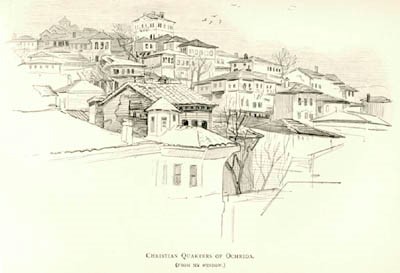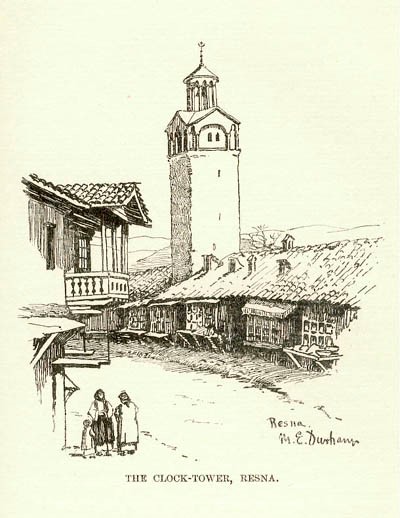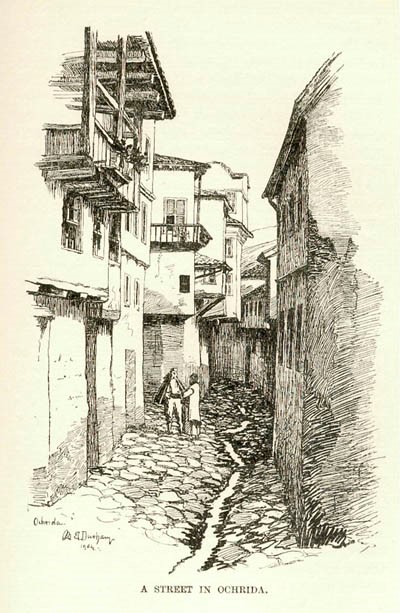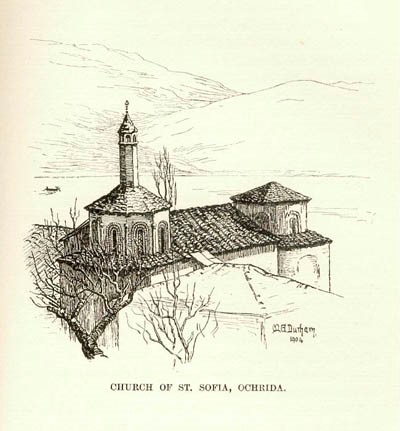Born in London 1863, Marry Edith Durham was one of the eight children of a Victorian family of a respected surgeon. She studied art at the Royal Academy of Arts and Bedford College in London. After her studies, she became accomplished illustrator and watercolorist exhibiting widely and working on illustrations for the Cambridge Natural History volumes.
On medical advice, still unmarried in her late thirties, she visited Balkan region in 1900. She was one of the first travel-writers who visited the Balkan region and went into a deep study analysis and description of the Macedonian, Albanian an overall Balkan affair. Starting from 1900, Durham traveled extensively in the Balkans over the next twenty years, focusing particularly on Albania, which then was one of the most isolated and undeveloped areas of Europe. She worked in a variety of relief organizations, painted and wrote, and collected folklore and folk art. Her work was of genuine anthropological significance. Her writings, however, were to earn her fame. She wrote seven books on Balkan affairs, of which High Albania (1909) is the best known.
Durham came to identify closely with the Albanian cause and championed the unity and independence of the Albanian people. She earned a reputation as a difficult and eccentric person and was strongly criticized by advocates of a Yugoslav state.
Much of Durham’s work was donated to academic collections following her death. Her papers were held by the short-lived Museum of Mankind (part of the British Museum) and the Royal Anthropological Institute in London, while her collections of Balkan jewelry are held by the Pitt Rivers Museum in Oxford and the Bankfield Museum in Halifax. The latter holds the collection of textiles and dress which Durham made during her travels throughout the Balkan region, and presents a permanent exhibition about her life and work
The most important work related to Macedonia region is her book: “The burden of the Balkans”, published in1905, where she describes her visits of Ohrid, Prespa, Bitola and Western Macedonia. The book contains numerous watercolors and drawings depicting of town views of Ohrid, Resen and Bitola. The book can be found on the following web page: http://www.peacelink.nu/Boker/Durham/Durham.html



